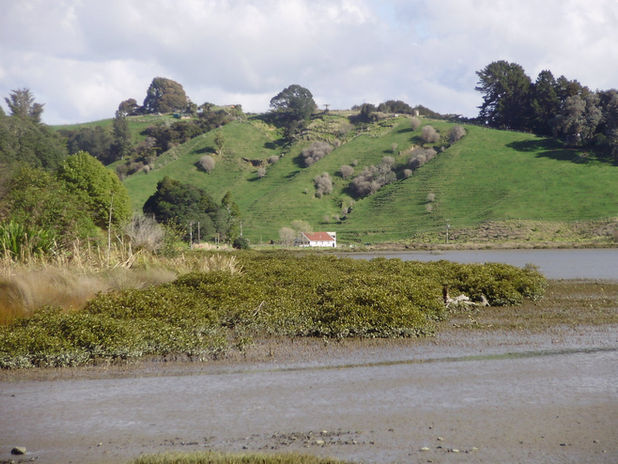Explore > Nature
Salty & Sweet

Nukuhou Saltmarsh.Image: BOPRC
Ōhiwa Harbour has a fascinating ecology. Its diverse habitats are a result of the salty influence of the Pacific Ocean and the freshwater streams and rivers that drain the catchment.
Ōhiwa is regarded as one of the most natural harbours in New Zealand. Since humans first arrived, the harbour and the hill country behind has changed considerably however.
Streams and river connections
The original forest that would have covered much of the flat and rolling land in the harbour catchment has been cleared for farming and forestry. The remaining coastal bush is generally in small pockets, dominated by pohutukawa and puriri.
The streams feeding the Harbour are home to many native freshwater fish, such as īnanga (adult whitebait). Barriers to fish passage such as culverts and floodgates stop the migratory freshwater fish from re-entering streams, preventing the completion of their life cycle. Many streams no longer provide suitable spawning conditions for īnanga.
The Nukuhou River is the main tributary to the harbour. Of the upper Nukuhou River, catchment, 61 percent is in pasture. This means more erosion or runoff in a shorter time than was the case under the original native bush.
Despite this, the water quality of the harbour itself is good in comparison to similar estuaries around New Zealand. Because the harbour is very shallow it benefits from its water being flushed out to sea and renewed in just one or two tidal cycles.
Wetlands – natural buffer zones
The harbour margins used to be much wetter. Those wetlands, now mostly drained, had their own unique environment that created important buffer zones between the land and the harbour. Wetlands filter runoff from pastoral land by screening sediment and nutrients.
In the remaining saltmarshes sea rush and oioi provide habitat for such rare birds as fernbird, bittern and banded rail.
From 1945 to 2011, mangroves in the harbour have increased by over 400 percent from 21 ha to 98 ha. Avicennia marina australasica, also known as Manawa, is native to New Zealand. It’s the muddy upper reaches of the harbour, home to titiko (mudsnails) and mudcrabs, that are being increasingly colonised by mangroves.
Bacteria in the wetlands convert nitrates to nitrogen gas, which is then safely released to the atmosphere, rather than to the harbour waters.
The story is more ambivalent when it comes to mangroves. Mangroves can provide additional shellfish resources in the form of oysters attached to the stems, and erosion protection of the harbour shore. In ecological terms, they enhance species diversity, increase habitat complexity and extent and they provide habitat for the rare banded rail. However, mangroves are encroaching into areas of the harbour with very different and significant ecological diversity. The latter are areas that contain shellfish beds and provide food and habitat for many thousands of wading birds.
To learn about the control of mangroves in the Ōhiwa Harbour click here.




